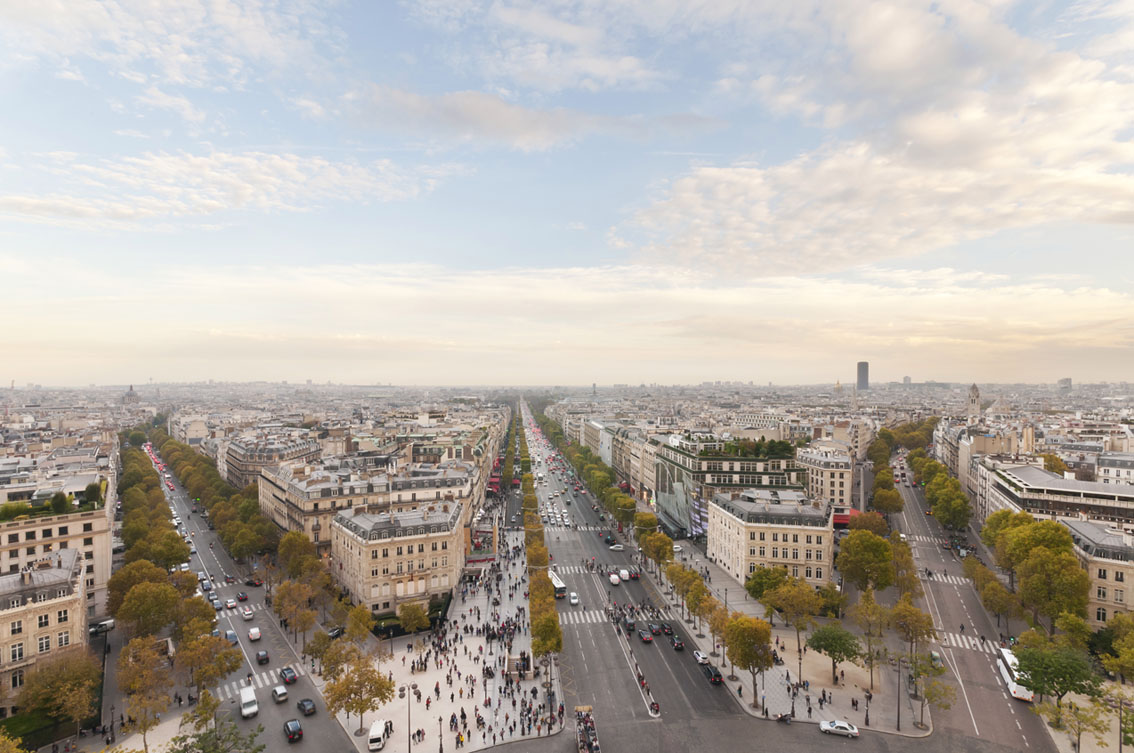When the Champs were not Elysées
The Champs-Elysées did not escape their ruler. In 1667, Louis XIV decided to open a route that would connect the Tuileries Palace and the Chateau de Versailles in a noble fashion. He asked André Le Nôtre to transform a vast area of marshland where Louis XIII used to go hunting, into a thoroughfare bordered by elm trees.
Under Louis XV, the Marquis de Marigny (brother of Madame de Pompadour) updated and expanded the place: a grassy avenue of linden trees stretched as far as the butte de Chaillot, along an avenue that has successively carried the name of avenue des Tuileries, Grand Cours, avenue de Neuilly, and route de St Germain.
Bordering this grassy avenue, was the charming countryside of Marais des Gourdes rich in market gardens and open-air cafés. In 1718, the Count of Evreux decided to build himself a superb mansion house here. On his death, it was purchased by Madame de Pompadour. Much transformed, today it is called the Palais de l’Elysée.
The closest village was called La Ville l’évêque. Since the 7th century, it had been the country seat of the Bishop of Paris. Here were found a villa, barns, fields, a farm, and even a little port (at the current site of place de la Concorde). This area had been cultivated land since the 1st century. At the end of the 16th century, a little hamlet formed, and the church (already!) was dedicated to Saint Mary Magdalene.

